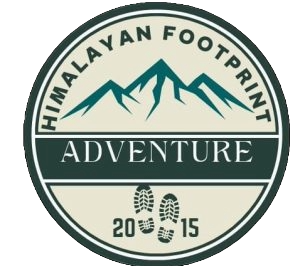Annapurna Base Camp
Annapurna Base Camp in Nepal is a beautiful place surrounded by tall mountains. People go on a trek to reach there, passing through villages and seeing nature. The trek ends at the bottom of the big Annapurna mountain, making it a special adventure with stunning views and a sense of achievement. It’s a fantastic place for those who love nature and want to experience the kindness of the local people. Annapurna Base Camp is like a magical spot where mountains and friendly villages come together, creating a wonderful journey for anyone who wants to explore the Himalayas.
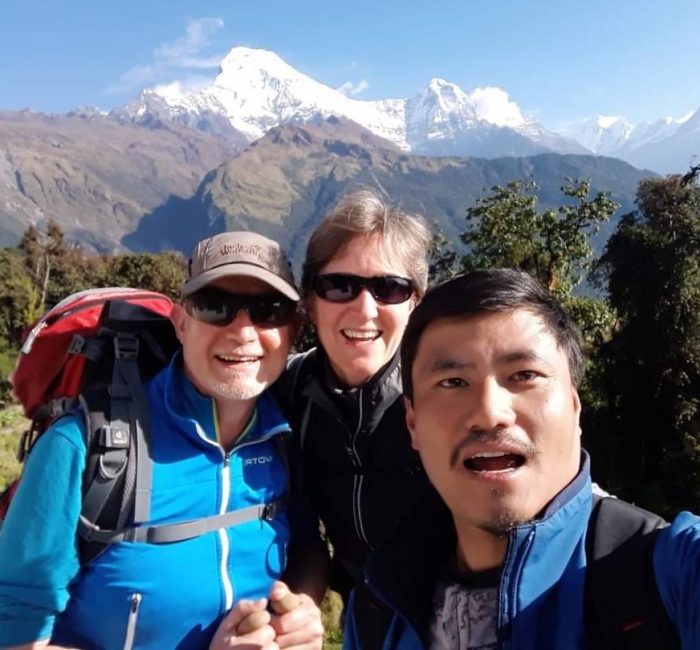

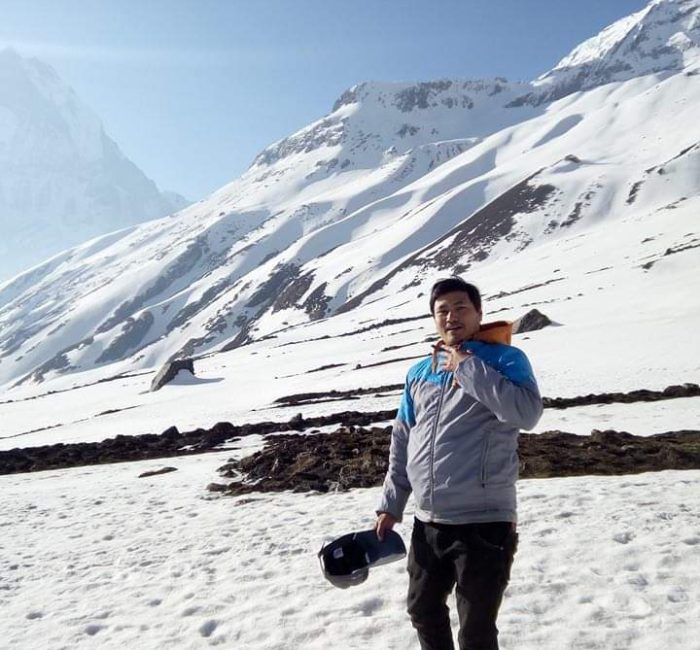
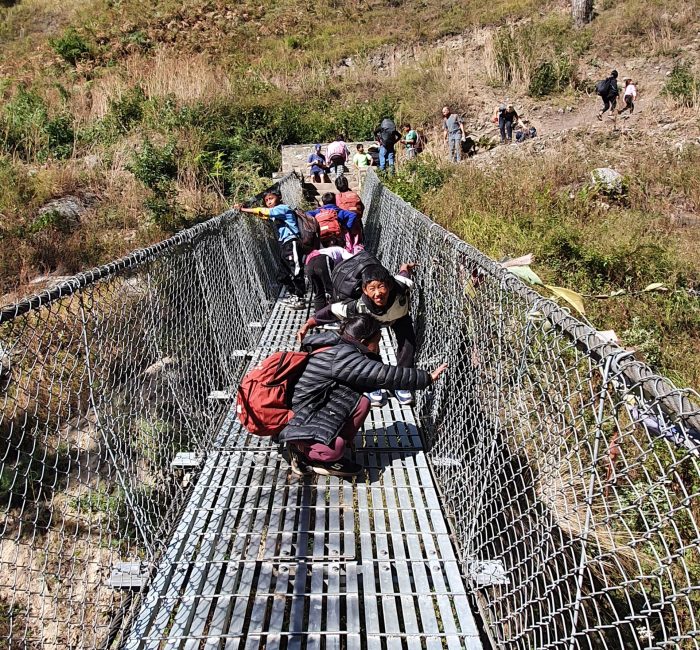
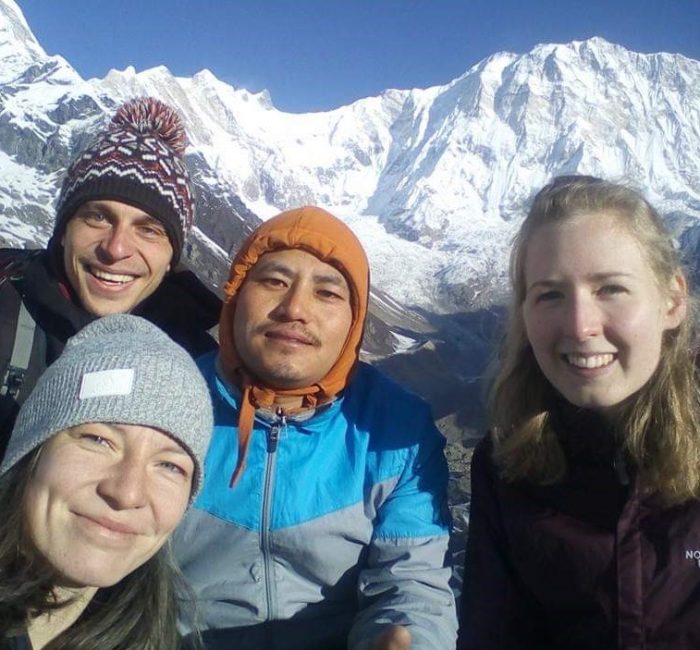
Annapurna Base Camp (ABC) is a popular trekking destination located in the Annapurna Conservation Area of Nepal. Nestled in the heart of the majestic Annapurna Range, this trek offers breathtaking views of some of the world’s highest peaks, culturally rich villages, diverse landscapes, and a unique opportunity to immerse oneself in the natural beauty and local culture of the Himalayas.
Location:
Annapurna Base Camp is situated at an altitude of approximately 4,130 meters (13,549 feet) above sea level. It lies within the Annapurna Sanctuary, a glacial basin surrounded by towering peaks, including Annapurna I (8,091 meters) – the 10th highest mountain in the world.
Trekking Route:
The trek to Annapurna Base Camp typically begins in Nayapul, a few hours’ drive from the city of Pokhara. The trail takes trekkers through diverse landscapes, ranging from lush rhododendron forests and terraced fields to rocky terrain and alpine meadows. Along the way, trekkers pass through charming villages inhabited by the Gurung and Magar ethnic groups, providing an opportunity to experience local culture and traditions.
Highlights:
Panoramic Views: The highlight of the trek is undoubtedly the breathtaking panoramic views of the Annapurna massif, including Annapurna South, Machapuchare (Fishtail), Gangapurna, and Hiunchuli. The sunrise and sunset views from the base camp are particularly stunning.
Cultural Immersion: The trek passes through several traditional villages where trekkers can interact with local communities, experience their hospitality, and learn about their customs and way of life.
Hot Springs: The natural hot springs of Jhinu Danda offer a relaxing stopover for trekkers to soothe their muscles after days of trekking.
Flora and Fauna: The trail traverses various ecological zones, allowing trekkers to witness a diverse range of flora and fauna, including colorful rhododendron forests (in season), bamboo groves, and a variety of bird species.
Annapurna Sanctuary: Reaching Annapurna Base Camp feels like entering a natural amphitheater surrounded by towering peaks, forming a sanctuary-like environment.
Duration:
The duration of the trek to Annapurna Base Camp can vary based on the chosen route and individual walking pace. On average, it takes around 7 to 12 days to complete the trek, including acclimatization days and stops along the way.
Difficulty:
The trek is considered moderate in terms of difficulty, suitable for both beginners and experienced trekkers. The altitude gain can be challenging for some, so acclimatization days are often built into the itinerary to help manage altitude-related risks.
Permits:
Trekkers require two main permits for the Annapurna Base Camp trek: the Annapurna Conservation Area Permit (ACAP) and the TIMS (Trekkers’ Information Management System) card. These permits are obtainable in Kathmandu or Pokhara before starting the trek.
Best Time to Trek:
The best time to trek to Annapurna Base Camp is during the pre-monsoon (spring) season (March to May) and the post-monsoon (autumn) season (September to November). The weather is generally stable during these periods, offering clear skies and pleasant temperatures.
Overall, the Annapurna Base Camp trek is an unforgettable adventure that offers a mix of natural beauty, cultural exploration, and a sense of accomplishment as trekkers stand in the shadow of some of the world’s highest peaks.
Day 1: Arrival and Leisure Day
Day 2: Exploring UNESCO World Heritage Sites
Day 3: Travel to Pokhara (by road or air)
Day 4: Trek to Tikhedunga/Ulleri (Altitude: Approximately 1,450 meters / 4,757 feet)
Day 5: Reaching Ghorepani (Altitude: Approximately 2,850 meters / 9,350 feet)
Day 6: Journey to Tadapani (Altitude: Approximately 2,630 meters / 8,626 feet)
Day 7: Progressing to Chhomrung/Sinuwa (Altitude: Approximately 2,140 meters / 7,020 feet)
Day 8: Advancing to Dovan (Altitude: Approximately 2,500 meters / 8,202 feet)
Day 9: Arrival at Machhapuchre Base Camp (Altitude: Approximately 3,700 meters / 12,139 feet)
Day 10: Reaching Annapurna Base Camp (Altitude: Approximately 4,130 meters / 13,549 feet)
Day 11: Descending to Bamboo (Altitude: Approximately 2,310 meters / 7,579 feet)
Day 12: Reaching Jhinu Hot Springs (Altitude: Approximately 1,780 meters / 5,839 feet)
Day 13: Proceed to Pokhara via Landruk.
Day 14: Explore Pokhara’s Attractions.
Day 15: Return to Kathmandu by Flight or Drive.
Day 16: Discover Kathmandu’s UNESCO World Heritage Sites, including Durbar Squares.
Day 17: Fly Back Home.
Included
- Experienced Guide
- Porter Service
- Three Meals Daily According to Guest Preferences
- Three Daily Hot Drinks
- Seasonal Fruits
- All Necessary Equipment
- Covered Transportation Costs During the Program
- Airport Pick Up & Drop Off
- Accommodation Throughout the Trek
- Sightseeing at UNESCO World Heritage Sites
- Accommodation in Kathmandu (Tourist Standard Hotel/Star Hotel)
- First Aid Support
- Provision of Trekking Gear if Needed (Crampon, Ice-Axe, Rope, Oxygen Cylinder, Sleeping Bag, Hot Water Bag)
- Staff Insurance (Guide, Assistant Guide, Porter, Cook, Assistant Cook)
- Food and Accommodation for Field Staff
- Equipment for Staff
Not Included
- Tips For Nepali Field Staffs (In Nepal, tipping is a customary practice in tourism, and trekkers usually anticipate receiving tips from clients at the program’s conclusion. Typically, we suggest offering 10-15% in tips to the guide and other field staff.)
- International Flight
- Travel Insurance & Visa Fees
- All Beverages
- Extra Expenses (Personal Shopping, Personal Transportation, Additional Activities not included in the program)
Clothing:
- Outer Shell Jacket: Waterproof and windproof jacket for protection against the elements.
- Hiking Pants: Comfortable, moisture-wicking pants that are easy to move in.
- Rain Pants: Waterproof pants for rain and wet conditions.
- Gloves: Insulated gloves for warmth and protection.
- Hat: Warm hat to cover your head and ears.
Footwear:
- Hiking Boots: Sturdy, comfortable hiking boots with ankle support.
- Socks: Moisture-wicking and warm socks. Consider bringing a few pairs.
Accessories:
- Backpack: Comfortable daypack to carry your essentials.
- Sunglasses: UV-protective sunglasses with good coverage.
- Sunscreen: High SPF sunscreen to protect your skin from high-altitude sun.
- Lip Balm: With SPF to prevent chapped lips.
- Headlamp: Essential for any early morning or late evening activities.
Sleeping Gear:
- Sleeping Bag: Warm and suitable for the expected temperatures.
Hydration and Nutrition:
- Water Bottles: Carry water bottles to stay hydrated.
- Snacks: Energy bars, trail mix, and other high-energy snacks.
- Water Purification: Water purification tablets or a filtration system.
Miscellaneous:
- First Aid Kit: Including basic medications, bandages, blister treatment, etc.
- Personal Identification: Passport, permits, and any other necessary documents.
- Camera: If you want to capture the breathtaking views.
- Power Bank: To keep your electronics charged.
- Toiletries: Toilet paper, hand sanitizer, and other personal hygiene items.
Optional Gear:
Trekking Gear Rental: You can rent some equipment in Nepal, such as sleeping bags and trekking poles.
Portable Altitude Chamber (PAC): For altitude-related emergencies, if you’re concerned about altitude sickness.
